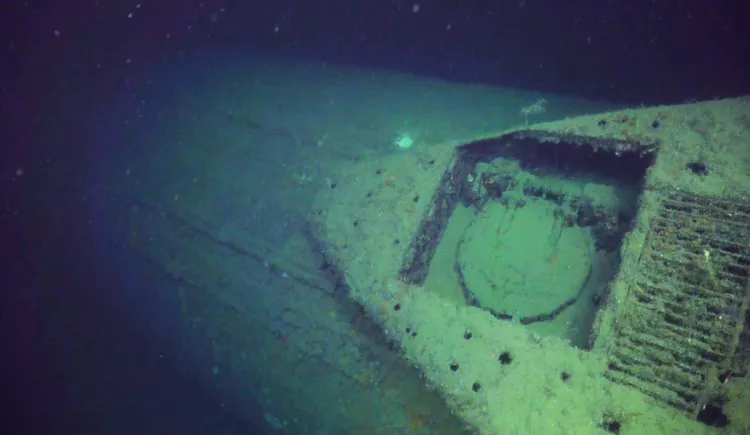Ikelite Fiber Optic Transmitter
For dependable fiber optic triggering of a compatible fiber optic underwater strobe, use this compact, independently sealed device instead of the flash bulkhead.
For dependable fiber optic triggering of a compatible fiber optic underwater strobe, use this compact, independently sealed device instead of the flash bulkhead.
Providing a magnification of 0.73x and wider 140° view underwater, this wide-angle conversion lens is compatible with GoPro and most action cameras, as well as smartphones.
The Slide Lock 2 from Dive Rite combines the innovative features and tight tolerances found in the new Azimuth series of reels with the familiar single-handed operation characteristic of the reliable Slide Lock reel series.
The waters off the coast of Norway have unveiled a long-hidden secret. The wreckage of the British submarine HMS Thistle, which sank during World War II, has been discovered after 83 years. The discovery was made by Norway's Institute of Marine Research and the MAREANO program during a routine seabed mapping cruise. The submarine's identification was confirmed only recently, following a subsequent cruise.
The HMS Thistle embarked on its final voyage on 10 April 1940. Tragically, it was torpedoed by a German submarine, leading to the loss of all 53 crew members on board.

Explorer Ventures invites dive shops, group leaders, and wholesale agents to connect, explore exclusive travel deals, and attend two captivating seminars set to enlighten attendees on the benefits of liveaboard dive travel.
Hosted in New Orleans, this year’s show is recognized as the must-attend event of the year. Explorer Ventures promises to spark liveaboard travel inspiration, foster dive shop growth, and present unparalleled networking opportunities.
Thirty shipwrecks associated with Operation Dynamo, a massive World War Two rescue operation, were surveyed by the French marine heritage agency Drassm in collaboration with Historic England.
This significant initiative, which took place between 25 September and 8 October, offers a detailed account of the wrecks' locations, characteristics and conditions, shedding light on the magnitude and human toll of this historic event.
Diving Through The Decades by Eric Hanauer, a highly regarded diving historian, takes readers on an up-close and personal, decade-by-decade journey through the evolution of diving while highlighting inventions, events, and noted diving pioneers.
As more and more people get their dive news and articles digitally, print dive magazines have been disappearing. Freelance photojournalist Eric Hanauer looks back at his time as a dive writer over the decades and how dive journalism has evolved.
On September 12, 2024, it is exactly 40 years ago the Hilma Hooker sank.
The Houting fish, believed to have vanished from our waters, has made an unexpected return. Previously listed as 'extinct' on the IUCN Red List of Species, recent research has unveiled that this fish is not only thriving but is also not a distinct species as once thought.
The initial classification of its extinction was centred on morphological differences, especially the number of gill rakers. However, a detailed study published on bmcecolevol.biomedcentral.com contradicts this.
The Huronton was a steel bulk freighter. It was designed to transport large quantities of bulk cargo, such as coal, grain or ore. These types of vessels are characterized by large, open holds and are specifically built to handle and transport unpackaged bulk cargo efficiently across water bodies. The Huronton, in particular, was navigating Lake Superior during its time of operation in the early 20th century.
The ability of coral reefs to adapt to changing ocean temperatures is a pressing question in marine biology.
Coral reefs are currently experiencing significant declines. These declines are primarily due to marine heatwaves, which lead to widespread coral bleaching and mortality. Understanding how coral communities can adapt to increasingly severe and frequent marine heatwaves is crucial for their survival in the face of climate change.